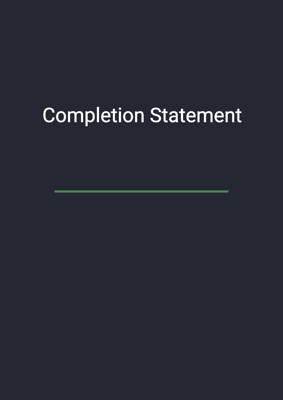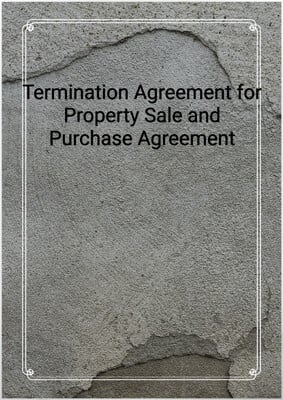How to Tailor the Document for Your Need?
01
Create Document
Fill in the details of the parties. You can click the "Fill with Member’s Information" button to complete it with information saved to your account.
02
Fill Information
Please fill in any additional information by following the step-by-step guide on the left hand side of the preview document and click the "Next" button.
03
Get Document
When you are done, click the "Get Document" button and you can download the document in Word or PDF format.
04
Review Document
The document should be signed by the authorised signatory (or directors of a company) and witnessed to complete the formality.
Document Preview
Document Description
A deed of reconveyance is a legal document used in real estate transactions, specifically in the context of mortgages and deeds of trust. Its primary purpose is to release the lien that a lender or trustee holds on a property's title once a borrower has fully repaid a secured loan. This document is a crucial element of the loan repayment process, as it formally restores the borrower's full ownership rights to the property.
Importance of a Deed of Reconveyance:
-
Clearing the Title: One of the fundamental reasons for a deed of reconveyance is to clear the property's title of any liens or encumbrances created when the mortgage or deed of trust was initially established. Once the loan is repaid in full, the borrower should regain clear and unencumbered ownership of the property. The deed of reconveyance serves as a legal record of this clearance.
-
Ownership Transfer: It acts as a formal mechanism for transferring ownership rights from the lender or trustee back to the borrower. This transfer is essential for the borrower to exercise complete control over the property, including the ability to sell, mortgage, or make any other decisions related to it without any lingering claims from the lender.
-
Protecting the Borrower's Interests: The deed of reconveyance protects the borrower's rights by serving as evidence that the loan has been satisfied. Without this document, a borrower could face difficulties in proving ownership or could encounter complications during future property transactions.
-
Legal Requirement: In many jurisdictions, a deed of reconveyance is a legal requirement. Failure to obtain and record it could lead to disputes over property ownership or difficulties in accessing the property's full market value when selling it.
-
Credit and Financial Records: A properly executed deed of reconveyance also helps borrowers by providing a clear record of loan satisfaction. This record can be beneficial for the borrower's credit history, as it demonstrates their ability to fulfill financial obligations.
-
Investor Assurance: For lenders and investors, a deed of reconveyance confirms that the loan has been repaid as agreed. This helps maintain the integrity of their investment and ensures that funds are not tied up unnecessarily.
In summary, a deed of reconveyance is a critical legal document that signifies the completion of a real estate loan repayment. It is vital for protecting the interests of both borrowers and lenders, ensuring clear property ownership, and complying with legal requirements. Its issuance provides a seamless transition of ownership rights back to the borrower, offering peace of mind and facilitating future property transactions.
How to use this document?
A deed of reconveyance is a legal document used in real estate transactions, specifically in the context of mortgages and deeds of trust. Its primary purpose is to release the lien that a lender or trustee holds on a property's title once a borrower has fully repaid a secured loan. This document is a crucial element of the loan repayment process, as it formally restores the borrower's full ownership rights to the property.
Importance of a Deed of Reconveyance:
-
Clearing the Title: One of the fundamental reasons for a deed of reconveyance is to clear the property's title of any liens or encumbrances created when the mortgage or deed of trust was initially established. Once the loan is repaid in full, the borrower should regain clear and unencumbered ownership of the property. The deed of reconveyance serves as a legal record of this clearance.
-
Ownership Transfer: It acts as a formal mechanism for transferring ownership rights from the lender or trustee back to the borrower. This transfer is essential for the borrower to exercise complete control over the property, including the ability to sell, mortgage, or make any other decisions related to it without any lingering claims from the lender.
-
Protecting the Borrower's Interests: The deed of reconveyance protects the borrower's rights by serving as evidence that the loan has been satisfied. Without this document, a borrower could face difficulties in proving ownership or could encounter complications during future property transactions.
-
Legal Requirement: In many jurisdictions, a deed of reconveyance is a legal requirement. Failure to obtain and record it could lead to disputes over property ownership or difficulties in accessing the property's full market value when selling it.
-
Credit and Financial Records: A properly executed deed of reconveyance also helps borrowers by providing a clear record of loan satisfaction. This record can be beneficial for the borrower's credit history, as it demonstrates their ability to fulfill financial obligations.
-
Investor Assurance: For lenders and investors, a deed of reconveyance confirms that the loan has been repaid as agreed. This helps maintain the integrity of their investment and ensures that funds are not tied up unnecessarily.
In summary, a deed of reconveyance is a critical legal document that signifies the completion of a real estate loan repayment. It is vital for protecting the interests of both borrowers and lenders, ensuring clear property ownership, and complying with legal requirements. Its issuance provides a seamless transition of ownership rights back to the borrower, offering peace of mind and facilitating future property transactions.
1. Clearly identify the borrower and trustee: This ensures that both parties are clearly identified.
2. Execute the deed: Have the trustee sign and date the deed in the presence of a notary public. This ensures the validity of the deed.
3. Notary acknowledgement: Have the notary public acknowledge the execution of the deed by the owner. This provides additional legal validity to the document.
Not the right document?
Don’t worry, we have thousands of documents for you to choose from:














